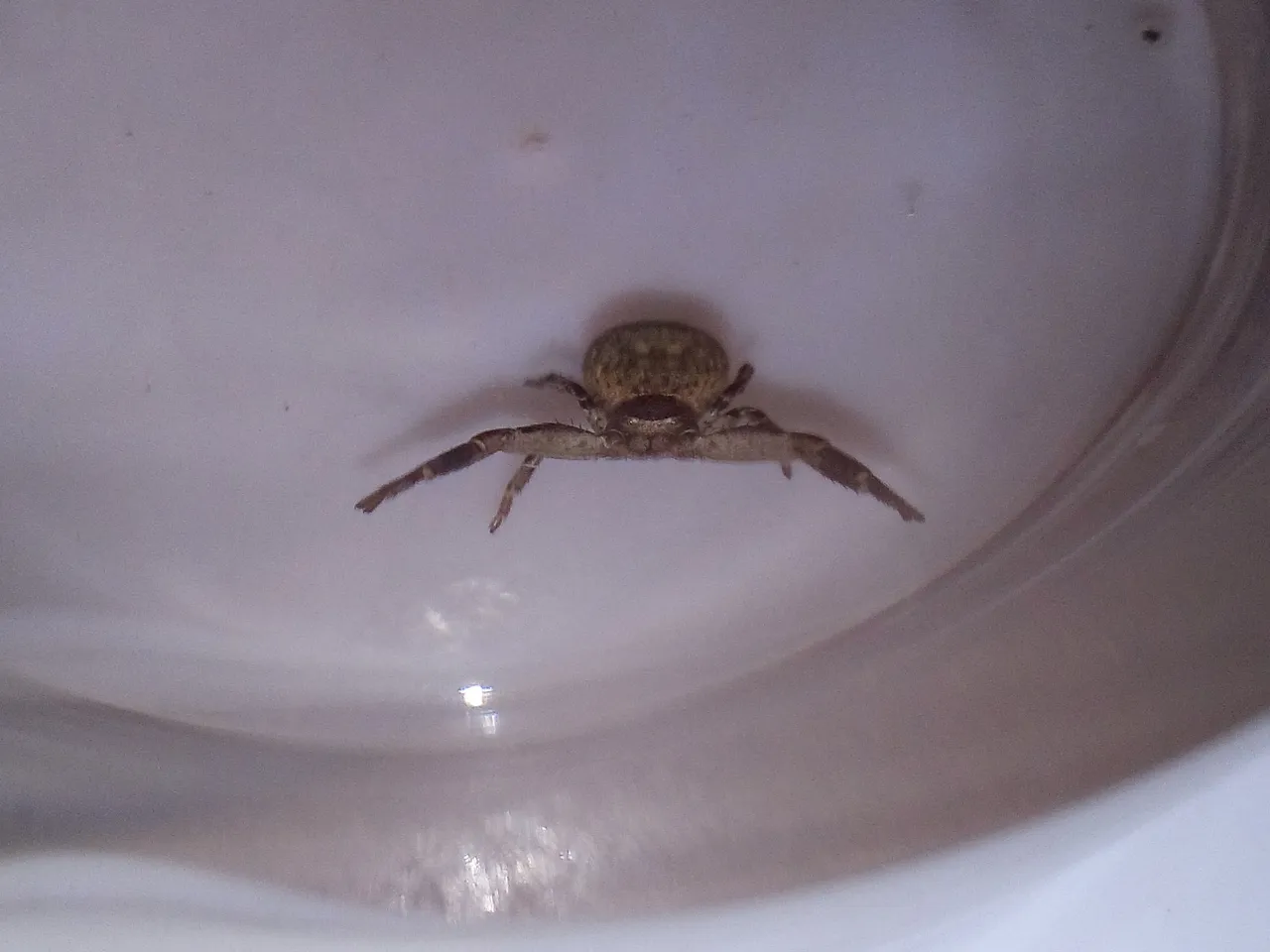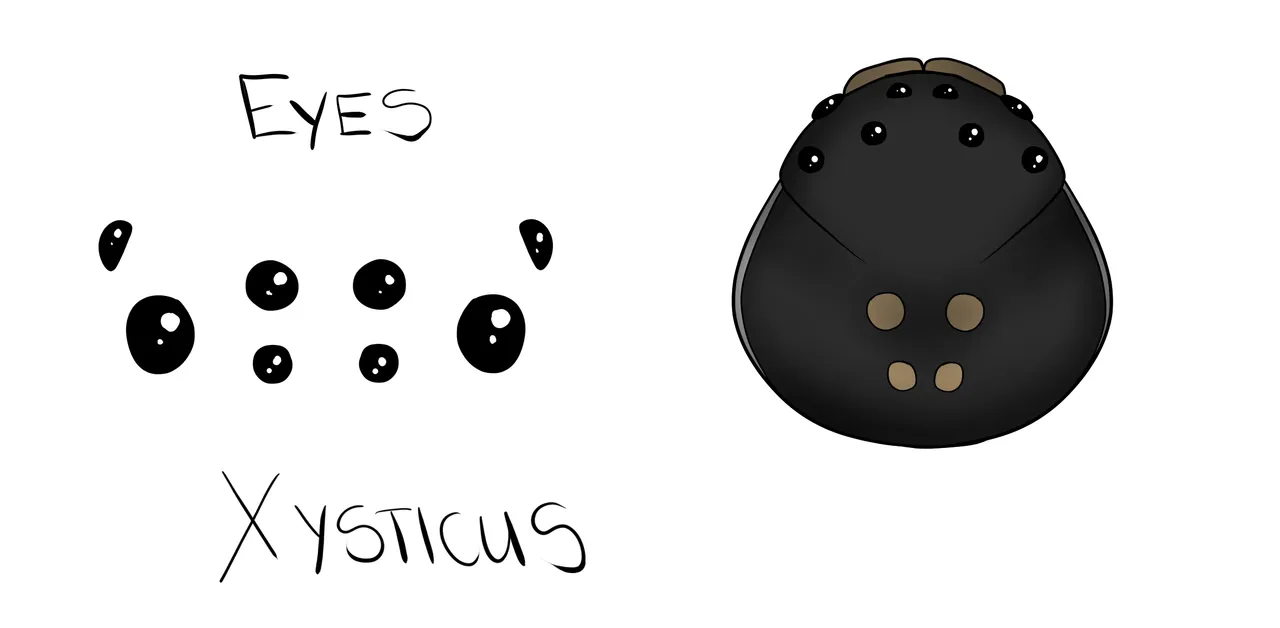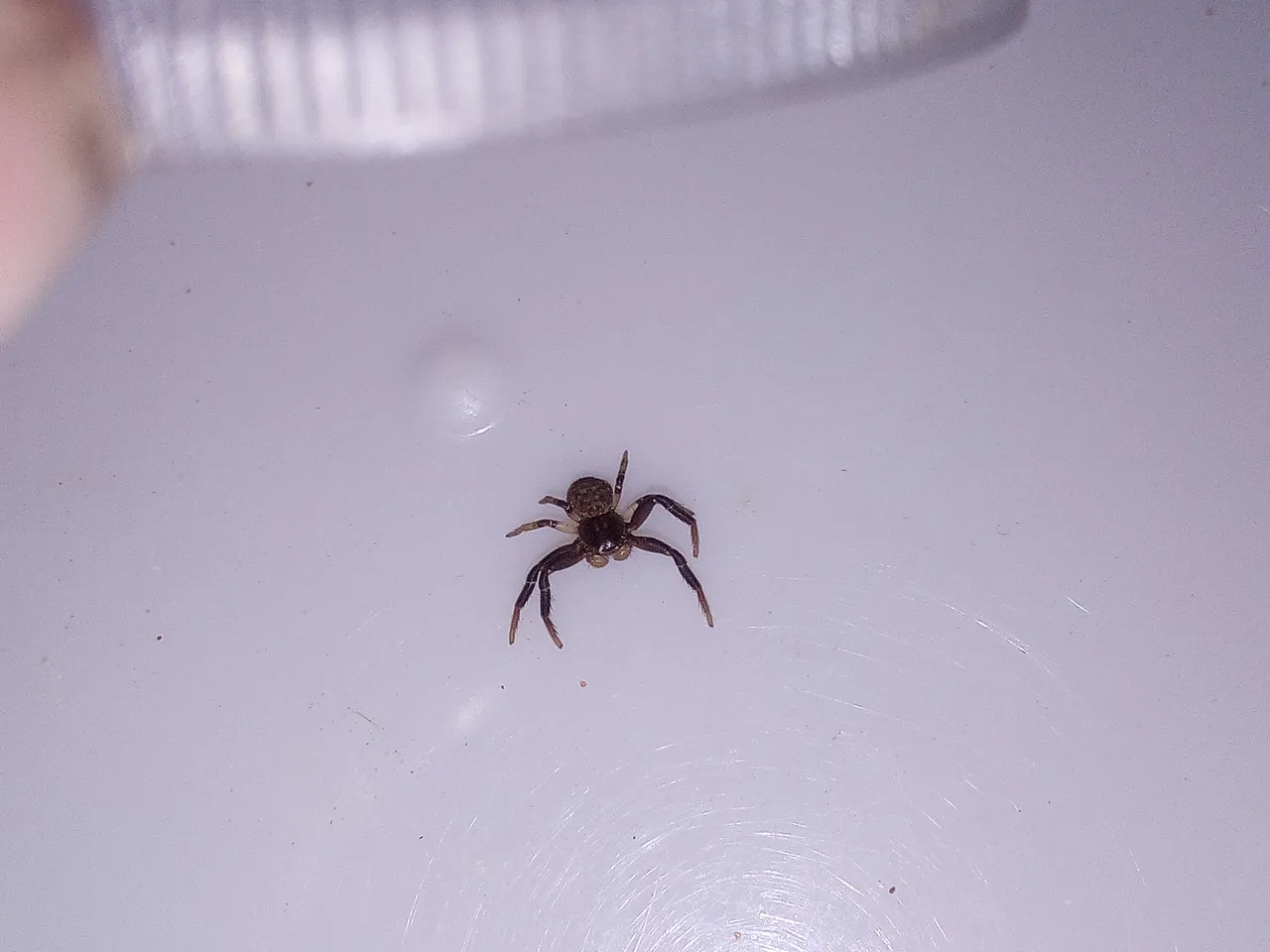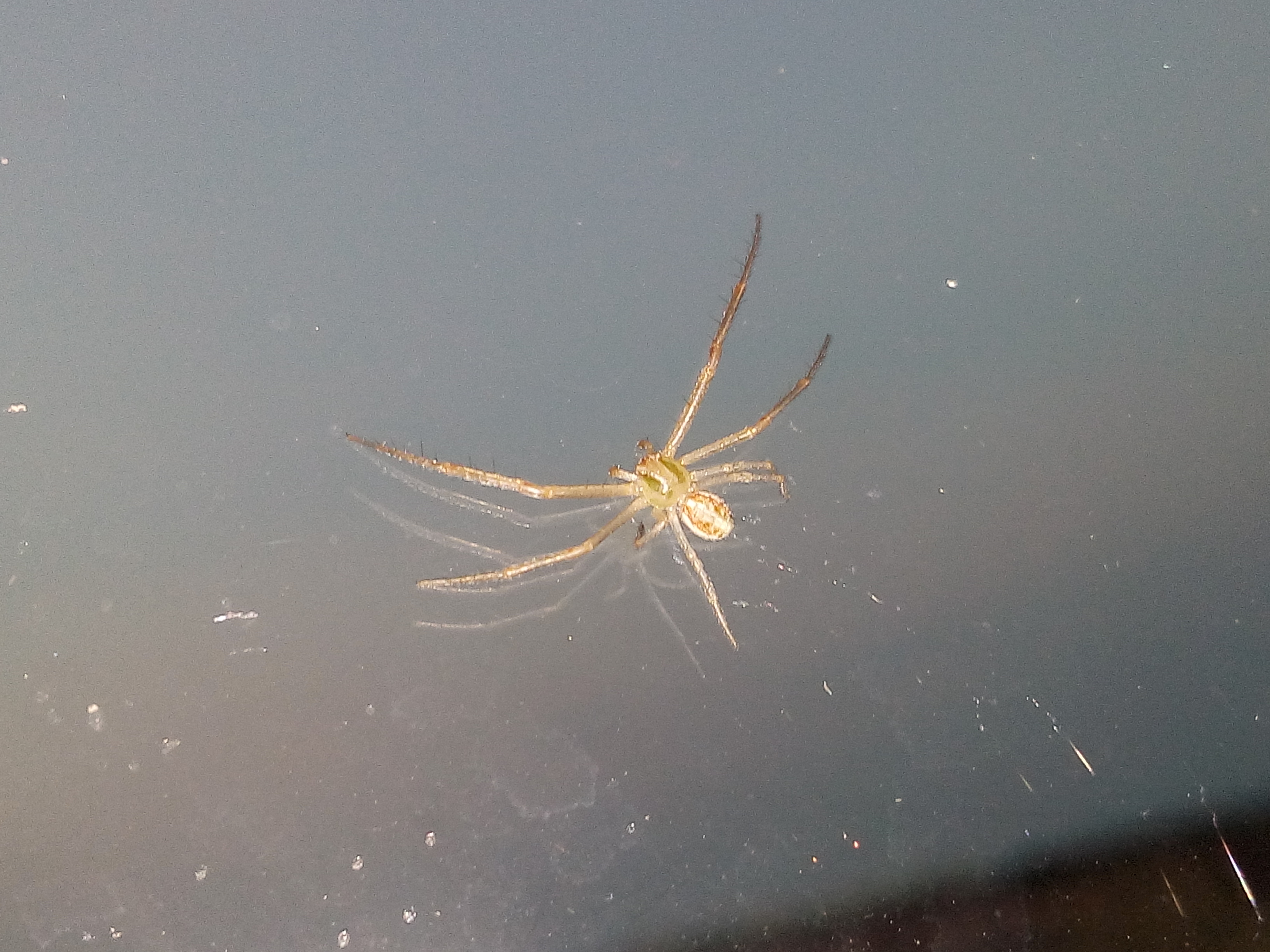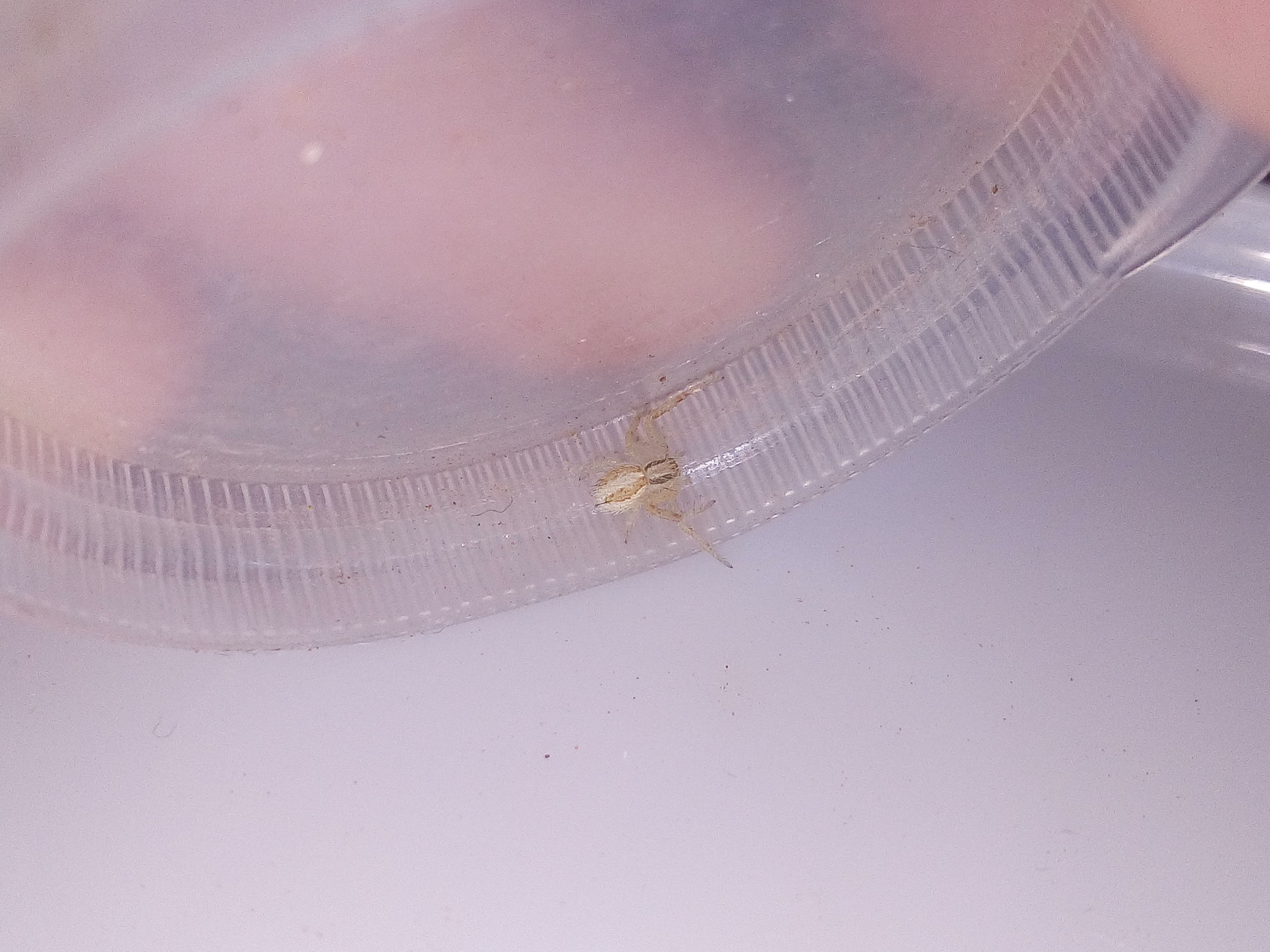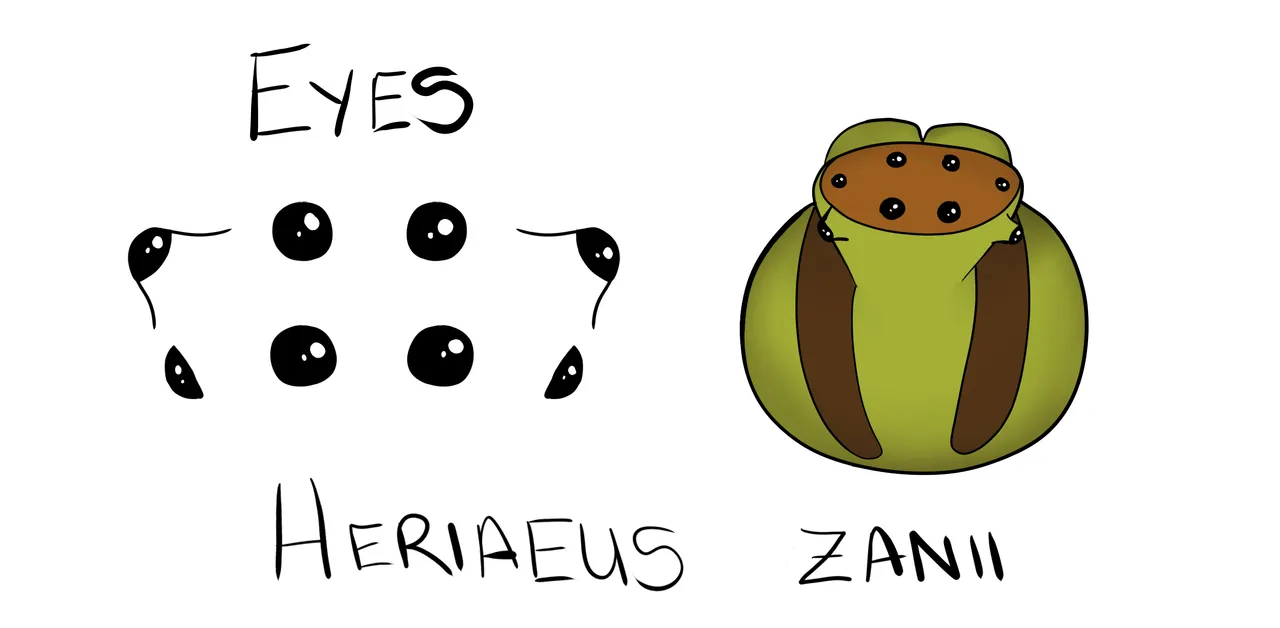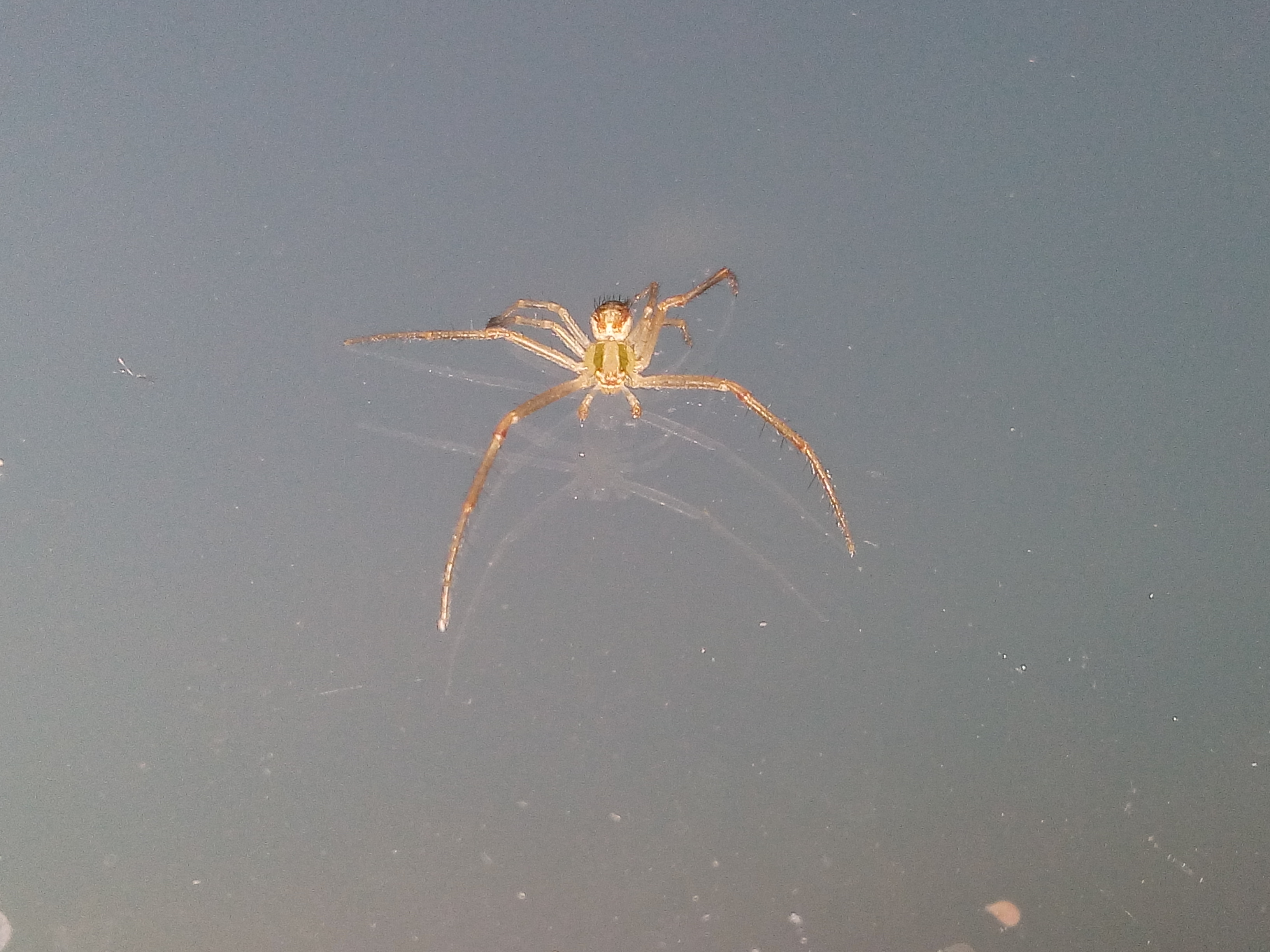Taxon:
- Class: Arachnida
- Order: Araneae
- Infra-Order: Araneamorph (true spiders)
- Family: Thomisidae
- Genus: Xysticus
- Species: Xysticus sp.
Female
Around 10mm in body length. Leg span of approximately 23mm diagonally.
Cephalothorax:
Dark brown carapace with four light dots posterior centre, anterior and clypeus light brownish yellow with light brown chelicera. Greyish round sternum with dark spot in centre. Dark brown coxae. Pedipalps reddish brown.
Abdomen:
Abdomen round and light brown, mottled, and faint dark bands across posterior. Ventral abdomen pale yellowish and mottled.
Legs:
Legs brown with pairs 1 and 2 dark brown to tibia, metatarsus and tarsus reddish brown and ventrally light brown and spotted. Legs 3 and 4 light femora and dark patella and tibia, light metatarsi and tarsi. 1, 2, 4, 3.
Male
Around 5mm in body length. Leg span of approximately 10mm diagonally.
Cephalothorax:
Dark brown carapace with four light dots posterior centre, anterior and clypeus light brownish yellow with light brown chelicera, thin white line on margins. Greyish round sternum with dark spot in centre and faint dark lines above either side. Dark brown coxae. Pedipalps light brown, swollen tarsi with taper.
Abdomen:
Abdomen round and light brown, mottled, with 2 light spots dorsal anterior and two faint dark bands across posterior. Ventral abdomen pale yellowish and mottled.
Legs:
Legs brown with pairs 1 and 2 dark brown to tibia, metatarsus and tarsus reddish brown. Legs 3 and 4 light brown with dark bands around patella. 1, 2, 4, 3.
ABOUT THE GENUS
These spiders are commonly known as ground crab spiders, preferring to live and hunt on the ground rather than in flowers and plants. Their brown, reddish, and black colours lend them the ability to hide in their surroundings. Like all crab spiders, they are ambush predators and not very fast or agile. The name Xysticus comes from the Greek word xyst, meaning “scraper”. These spiders are difficult to identify and require a look at under the microscope to determine species.


